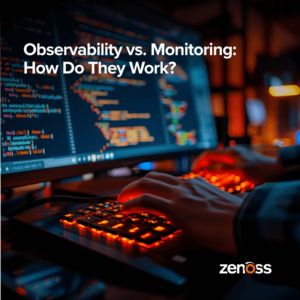As I wrote in a previous blog post, the world has undergone massive changes that have created chaos for CIOs as they struggle to ensure operational continuity, including when in scenarios where things change in an unprecedented fashion overnight.
What does operational continuity look like as the world moves forward in the paradigm of the new normal? In the previous blog post, I highlighted some significant paradigm shifts the new normal will include, with an intensified focus on these key areas:
- Unified communications – Recent months have enlightened many business leaders regarding what can be accomplished remotely, and IT leaders will require tools to optimize audio and video cost and productivity for a workforce that can change dramatically overnight.
- Automation – IT leaders have long sought a "lights-out data center" where everything is automated, but there is a new level of rigor to build these solutions to increase efficiency, deal with dynamic workforces and architectures, and remove the element of human error.
- Cloud mobility – Cloud computing has obviously already had a huge impact on IT architectures, but going forward, IT leaders will require tools to help seamlessly move workloads to and from the cloud and to help them understand when to do so.
In this blog post, I'll take a closer look at the new focus on automation. The pursuit of automation is not a new endeavor. But because of COVID-19, the outlook of automation seems to have had a dramatic shift. Particularly as it pertains to IT, organizations seem to have quickly adopted a more progressive attitude toward automation. When it was perceived as a nice-to-have capability, conventional wisdom seemed to advocate dipping a toe in the automation waters. Then COVID-19 came along and shoved them into the deep end.
Over the past four or five years, enterprises started digital transformation initiatives to remain relevant. For most organizations, digital initiatives have been an uphill battle with limited progress. But this has changed overnight. Satya Nadella, CEO of Microsoft, recently said on an earnings call that "we saw two years' worth of digital transformation in two months." The global situation has dragged virtually all companies into uncharted territory, which is catalyzing digital transformation projects and the focus on intelligent automation. And these emerging trends are unlikely to fade when some level of normalcy is restored — organizations are changing their mindsets from architecting solutions built to last to architecting solutions built for change.
"The first rule of any technology used in a business is that automation applied to an efficient operation will magnify the efficiency. The second is that automation applied to an inefficient operation will magnify the inefficiency." - Bill Gates
IT organizations have long been plagued with too many views of the "truth," created by monitoring tool sprawl. The inability to leverage any of this siloed data to provide context around IT incidents has been a key inhibitor in getting to root causes quickly and accelerating problem resolution. With scale and complexity growing at ever-increasing rates, a modern approach is required for managing modern environments. Intelligent monitoring and AIOps capabilities can be combined to derive the much-needed context, an ingredient that has proven to be paramount in enabling intelligent automation to immediately address a broad range of IT issues. When data collection and analysis is ubiquitous, this can result in dramatic improvements in IT efficiency while simultaneously lowering costs and mitigating risk. If you’re trying to implement automation with silos of data from disparate sources, you're probably going to magnify the inefficiency.
Innovative organizations are focusing their monitoring and analytics approach to develop this elusive context are rapidly becoming able to:
- Increase Efficiency
- Automate discovery, ticket creation, and performance or system failure response actions
- Integrate with complex configuration management systems like Chef, Puppet, SaltStack and more
- Automate routine and complex tasks alike, simplifying management and deployment of templates for rapid application provisioning
- Integrate with provisioning, orchestration and automation solutions to monitor updates to key services as they are released, aligning the two workflows without disrupting the mismatch in cadences among internal teams
- Improve Agility for Business and IT
- Deploy new applications in minutes, including integration into CMDBs and service management tools
- Extend current capabilities of application provisioning to provide application awareness in the infrastructure
- Reduce mean time to resolution
- Streamline to Reduce risk
- Enable enterprise IT to automate and streamline cross-team processes
- Increase productivity and eliminate issues caused by human error
- Integrate with provisioning and orchestration tools to quickly discover the source of recurring problems
- Get automatic notifications with detailed reports when the problems are identified
Though the world has changed dramatically in recent months, and this has prompted a significant change in mindsets, innovative companies across all industries are changing their automation priorities for the long haul, not just to endure the current situation.







